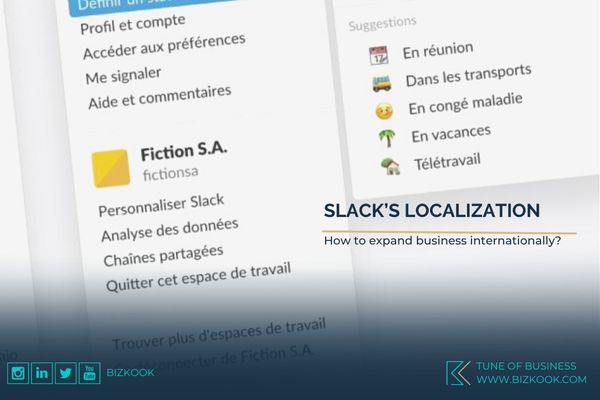If your local market is too narrow for your business, you may think of diving into the global market. Before launching your services or products to an international audience, it’s essential to comprehend your new markets, know the difference between shift and localization and ensure you have the required technical and brand infrastructure to manage it all. Once you have a stable set-up, think of advertising worldwide and across borders so that your marketing messages are seen by the right audience, wherever they are.
Introduction to expand business internationally and global growth
The global marketplace is an excellent opportunity for every business, and today digital marketing makes it easy for almost any business to think internationally when seeking new customers. We’re going to look at the possibilities, opportunities and facts of international marketing, focusing on how to evaluate international markets for your service or product and which operational and cultural issues you need to be ready for.
Let’s imagine you have a shoe shop with a stellar reputation. Your high-quality products and expertise have helped you stand out and attract an honoured customer base. Business is acceptable, but you want to reach more customers. You’ve surveyed some of the abroad markets and figured out it’d be a good tactic to sell your products in other countries.
The first question that comes to your mind is where to start. Here we go through the answer and help you start expanding your business internationally. First, you need to study and learn about the target market in each area you’re considering to grow your sale, and find out the best-optimized way to reach them.
For instance, with online marketing, you can analyze the search traffic, competition and pricing. This will give you an overview of your potential markets, so you can determine where your services and products will be acceptable.
You can use search engine trend reports, geographic data in your Google analytics, and digital marketing insight tools to help decide which markets would be the best place to start growing your business.

Once you know where your target is and where you want to go, you may require to overcome communication and language barriers. How do you market and communicate to prospects and potential customers without losing the main concept in translation?
One big step is to localize and translate your business website’s content. Keep in mind to avoid using automated translation services as they are rarely 100% accurate. You can help a native speaker or a content marketing agency to write website content for you or validate your translated website content’s correctness and check whether it has the right tone.
Your prospect and new customers from different nationalities and cultures with different languages will need to communicate with you, too. Before you start, be ready with a straightforward plan to support those customer service needs. Next, think about your technical infrastructure and the systems you’ll need to support properly in expanding business internationally.
If you are selling products and you may want to export them, don’t forget about suitable branded packaging, considerations for fragile parts, VAT, and any legal or regulatory issues. Of course, if you are selling just services into the international market, you do not need to consider this step, and you may need to have a proper service contract based on international rules. You can get help from an international lawyer to write or check your contract. Anyway, once you design your packaging, or make your service contracts ready, it’s time to review your payment methods, solutions and e-commerce.
Although many e-commerce systems are able to set up multinational transactions, you’ll have to customize your payment options and other settings.
Even with great international e-commerce systems, you’ll still need to think to get your services and products to your new international customers.
Plan for the way you want to ship and deliver your products. What is the requirement for delivering the orders across borders? What is your refund strategy? what are your guarantee and warranty rules? Do you have any customer clubs? How do you support your customer, and what is your business services?
Expanding business internationally is an exciting vision and strategy and could develop your business tremendously. Mapping out your strategy in advance is the secret to success.

Validate business in the global market
Digital marketing gives you straightforward and low-cost access to a global marketplace – and this makes your global business expansion an attractive business development strategy. Before you start, you’ll need to evaluate your business and prepare it for international trade.
Before you start selling your services and products overseas, it’s really important to decide which country is a good market for you. Which country has the most demanding markets for what your business offers? Are there any special regulations, legal or logistical challenges that you need to know and study about?
In this step, we learn how to use analytics and market research tools to choose the best international market for expanding your business. Remember our previous example. You have a stellar reputed online shoe shop, and everything is good in your domestic market. But as every business owner, you are thinking of your next step strategy to have an international expansion. When you think of the global market, there are many countries where you could sell your service or product successfully and others where you’d be less likely to find your desired customers. Choosing a suitable market internationally can optimize your business cost and lower the risk of failure.
The good news is that there are lots of analytic tools you can use to determine the market in advance. Google’s Market Finder is a free tool that allows you to quickly analyze search traffic on keywords that are important to your business. Market Finder is a free Google service for businesses interested in global expansion. It provides detailed insights into which markets are best suited to your service or products, plus useful guides on how to expand into a new market.
For example, you can check where people do a lot of searches for your shoe models. Countries that have a lot of search traffic for your desired keyword, like these, could be suitable markets with lots of demand for your offer. There are countries that don’t show a lot of searches for these keywords, and apparently, they aren’t your best choice. You can make more well-informed decisions about which part of the planet to invest in expanding your business internationally.
Once you’ve found the countries that show a lot of searches for your service or products, use tools like Bing’s Keyword Research Tool and Google’s Keyword Planner to find out search ads competition. Checking the search ad competition will help you know whether you’re entering a blue ocean market with few competitors, or whether you’ll be entering a red ocean with lots of competitors. Another convenient tool is your website analytics. Whether you’re using Google Analytics or any of the other popular analytics tools, you can check whether people in other markets are already interested in your services or products. For example, You might notice that you’re getting a lot of website visitors from Germany, where you have not served your service or shipped your product before. People from Germany browse your website and realize that they can’t buy your service or product in their country yet. This could give you the insight that you might have a potential customer base waiting for you in Germany.
So far, after online market research and using analytical tools there, you must consider some other parameters that may help you decide your a suitable international market to expand your business.
These parameters include countries’ trade legal rules and tax regulations, or maybe they require a special certificate for exporting your goods.
All these are important issues that, you need to know before starting to invest in expanding your business. Some international markets may seem appealing to you “on paper and in numbers,” but doing some research into these types of issues will help you avoid any unpleasant surprises. To figure out these things, you can refer to each country’s governmental websites you can find resources to help you answer these kinds of questions and their import rules and regulations. Once you’ve done the legal and regulatory issues research, you can decide on your international target confidently, and you’re well on your way to growing your business globally.
International business localization strategy
To business expand globally, you need to communicate in other languages and provide customer support and ship to customers wherever they are.
When you plan to expand business internationally, you may need to market and present your service and product to potential customers who live abroad and speak different languages. In this step, you may want to learn how to localize and translate your content based on the target market culture and demand. It is essential to understand the critical difference between just translated content and localization which has the tone of people’s culture.

Why is localization important in international business expansion strategy?
Translation and content localization makes your online presence available in many languages, across all online channels, and is great insurance that your business will be able to reach more people globally. This enhances a positive user experience for international customers and helps them trust your brand, and that is a secret key to winning in the international market.
What are the main elements of localization?
In the former example, you conclude that Germany could be a great opportunity as an international market for your product. Start doing some research and think about this country.
How will German customers discover your products? Is it through advertising? Do they find you in Google and other search engines? Can they reach you by social media? And most of the time, in the digital world, it could be a combination.
To have an appealing website for international customers, you need to think of localization and translation.
As it is obvious, translation is the process of transforming your content from one language to another. You do the translation to be understood by your foreign potential customer.
But only translating content might not be enough. Words and phrases that work in an English market may not resonate with a German audience. Here you need to go through the process of localization, which means making your content the way they feel local and in their native language.
Website international localization and translation include elements such as: Transactional and data-based information such as currency conversion, number formatting, region’s units of measure, time zone conversion, correct phone numbers, contact information, addresses, and payment information are essential to localization.
Also, you need to change specific cultural references to feel local to the international customers you’re marketing to.
It seems complicated, but there are many experts who can help you in this step.
Need Help?
For more information and free consultation session to expand your business internationally, contact BizKook
Localizing and translating your website content is a key process to expanding business internationally and can help potential international customers find you, understand what is your service or your product and make it much easier to accept your offer.
What are successful localization strategy examples?
Here is a successful localization case-study that has built an outstanding connection with their international audience by implementing remarkable localization strategies:

Slack
Slack, is an application that vision is to make communications faster, simpler and more fun for work teams and was founded in 2012. They started launching by presenting their product to friends and contacts in American companies and got 8-10 companies to try Slack and share their experience and feedback. Since then, Slack has grown to have a large user base of 500K firms and 8 million daily active users and 3 million pay users for more features.
A Slack spokesperson said more than 50% of its users are in more than 100 countries outside of the US. The top five markets outside North America as Slack users are the UK, Germany, Japan, France, and India.
While countries like UK and India use English as their primary business language, Germany, Japan, and France use their regional languages. The slack team decided to localize their app to a number of different regions, to increase their user base and to build a stronger connection with users in those countries.
Slack is famous for its comical remarks, anecdotes, and references to familiar regional idioms and is extra thoughtful about these things as it helps them build trust and reputation with their international users. Take a look at these images to understand the extent of localization the company deploys:

The image on the left is Slack’s welcome screen for its Japanese clients. It is a popular saying that means you’ve done a good job; look at the scenery to rest your eyes. The image on the right in French says, “We are here to help”, as opposed to the English “You look nice today”
The response of international users all around the world to this localization strategy was positive. Apart from the general “Welcome to Japan” and “Welcome to Spain” tweets, a lot of users have asked for Slack to be localized to their countries like Arabic and Turkey.
Source: https://slack.engineering/localizing-slack/
How to advertise business internationally
When you’re expanding business internationally, you should undoubtedly have a smart marketing plan. Luckily, there are many online advertising solutions that can help increase your brand awareness worldwide.
You may need to find the most effective way of introducing your service and product to the new market.
If you SEO your website and you have optimized content, by being on top of SERP, you may have the opportunity to be found by your new customers in the new market, Or it is possible that they will find you through WOM (word-of-mouth). But still, advertising is a fast tool to grow your brand awareness and sale. There are different options to advertise business internationally, including Google Adwords, display ads, search ads, social media promotions, influencer marketing and other PPC ads.
In our former example, an online shoe shop, If you’re planning to expand your business internationally from the UAE to Germany, you’ll need to get your website translated and localized into German and SEO it on your related business keywords in the first step. That way, when people search for your product-related terms in German, they might see you in SERP and come across your website, and you have the opportunity to make them purchasing users.
Although SEO is a great investment as you may know, it is a time-consuming process, and in this agile world, we may need to use advertisement parallel to optimize our website for search engines. Online advertising is a great solution to get your business in front of lots of prospects.
Tips for advertising business globally
Having a plan may optimize your money and time. Before starting online advertising, here is a step to step recipe for your success journey:
- Define your goals and targets:
Who is your audience, What are their needs, and how can you reach them in the new market?
- Develop a brand guide for each target language and region:
Brand image consistency is vital when working globally with different partners. This may make your brand much more valuable.
- The translation is good, but it is not enough; make it localized:
Using automated translation engines such as Google translate will hurt your brand reputation as it may have some errors and it is not localized to cultures and tones of voice.
- Select the best channel for advertising:
Deciding on the best channel is really vital as there are some local social media or popular websites which your potential customer in the target country may use, and they are totally different from your domestic market.
Use website analytics and social media insights to evaluate your performance.
Digital Marketing is a loop, and a good marketer is one who tests various assumptions based on facts and optimizes their advertising campaigns.







![How to expand business internationally? [Ultimate Guide 2023]](https://bizkook.com/Business/wp-content/uploads/2023/01/BizKook-expand-business-internationally-1024x576.jpg)